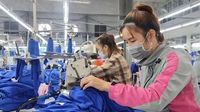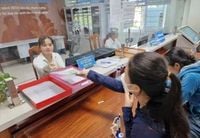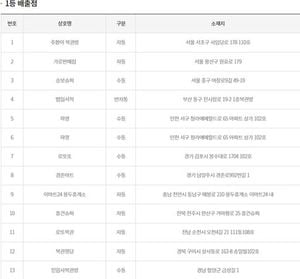On June 30, 2025, Vietnam's Ministry of Home Affairs issued Circular No. 12/2025/TT-BNV, a detailed regulation clarifying key provisions of the Social Insurance Law related to compulsory social insurance. This circular, commonly referred to as Circular 12, focuses on several important social insurance benefits including sick leave, maternity, retirement, and death benefits, with particular attention to the sick leave regime for participants in compulsory social insurance.
Circular 12 applies broadly to beneficiaries of social insurance under the law, employers as defined in Clause 3, Article 2 of the Social Insurance Law, and other relevant organizations and individuals involved in compulsory social insurance. The regulation meticulously outlines the eligibility criteria, duration, and benefit calculations for sick leave, as well as special cases and procedures for claiming benefits.
Under Circular 12, workers enrolled in compulsory social insurance—including contract employees, civil servants, public officials, military personnel, police officers, essential workers such as those in cryptography, militia members, business managers, registered household business owners, and foreign workers with labor contracts of at least 12 months—are entitled to sick leave benefits in several scenarios. These include illness or accidents not related to work, accidents occurring during commutes on reasonable routes and times, rehabilitation following occupational injuries or diseases, organ or tissue donation and transplantation, and caring for a sick child under seven years old.
Notably, the circular clarifies special cases that qualify for sick leave benefits. Female workers who return to work before the end of their maternity leave are eligible, provided they meet other conditions. Fathers or direct caregivers who do not take maternity leave are also covered, as are workers whose contributions to retirement and death benefit funds are temporarily suspended due to employer hardships such as natural disasters, epidemics, or national defense duties. These provisions ensure that temporary suspension of contributions does not strip workers of their sick leave rights.
However, the regulation also specifies exclusions. Workers who self-inflict injuries or harm, use illicit drugs (except prescribed medications containing precursors), or are on initial leave for rehabilitation from occupational injuries or diseases are not eligible for sick leave benefits. Additionally, sick leave periods overlapping with other legally mandated leaves such as annual leave, fully paid leave, or maternity and convalescence leave are not counted towards sick leave benefits.
The circular details the maximum duration of sick leave benefits granted annually, calculated in working days and excluding holidays and weekends. For workers in normal conditions suffering from non-long-term illnesses or accidents, the limits are tiered by years of social insurance contributions: under 15 years grants up to 30 days; 15 to under 30 years up to 40 days; and 30 years or more up to 60 days. Workers in hazardous, toxic, or particularly difficult conditions, or those working in economically or socially disadvantaged regions, receive extended durations: 40, 50, and 70 days respectively for the same contribution brackets.
Importantly, the maximum sick leave duration in a year is independent of when a worker began participating in social insurance. For sick leave that crosses over from one year to the next, the days are counted in the year when the leave actually occurs. In cases of long-term illnesses requiring extended treatment, after exhausting the maximum sick leave duration, workers continue to receive benefits based on their contribution years at reduced rates: 65% of their social insurance salary for 30+ years of contributions, 55% for 15-30 years, and 50% for under 15 years.
The circular also provides detailed guidance on sick leave related to caring for sick children. Workers can receive benefits for up to 20 days per year for children under three years old, and 15 days per year for children aged three to under seven. The child’s age is calculated up to their birthday in the year they turn three or seven, and the benefit period is based on the start date of the leave. If both parents participate in compulsory social insurance and alternate taking leave to care for a sick child, each parent may receive the full maximum benefit independently. If both take leave simultaneously, both are eligible, but the maximum duration per parent remains capped. In cases where multiple children under seven are ill simultaneously, the benefit period corresponds to the actual time taken off.
Sick leave benefits are calculated based on the worker’s salary used for social insurance contributions in the month immediately preceding the leave. If the leave starts in the first month of participation or upon return to work, that month’s salary is used. The standard benefit rate is 75% of the average salary, excluding cases of long-term illness and certain categories such as military or police personnel. The formula for calculating sick leave benefits is: (Social insurance contribution salary / 24 days) x 75% x number of sick leave days. For long-term illnesses, the formula adjusts the percentage based on contribution years (65%, 55%, or 50%).
Daily benefits are computed by dividing the monthly benefit by 24 days. Partial days are rounded: less than half a day counts as half a day, and from half to less than a full day counts as a full day. Additionally, sick leave benefits are adjusted in line with government changes to basic salary, reference levels, or regional minimum wages.
The circular sets out the procedural responsibilities for claiming sick leave benefits. Workers must submit documentation such as hospital discharge papers and social insurance sick leave certificates to their employer within 45 days of returning to work. Employers then compile and submit lists to the social insurance agency within seven working days of receiving complete documents. The social insurance agency is mandated to resolve claims within seven working days of receiving the employer’s submission, ensuring timely processing.
Data from the first half of 2025 underscore the significance of these regulations. The Vietnam Social Security system processed monthly social insurance benefits for 90,655 individuals, marking a 132.56% increase compared to the same period in 2024. Concurrently, nearly 4.4 million workers received benefits related to sick leave, maternity, convalescence, and health recovery—a rise of 8.39% from the previous year. These figures highlight growing engagement with social insurance programs and the vital role of Circular 12 in clarifying and expanding worker protections.
In essence, Circular 12/2025/TT-BNV represents a comprehensive effort by Vietnam’s Ministry of Home Affairs to provide clear, detailed guidance on compulsory social insurance benefits, especially sick leave. By delineating eligibility, duration, benefit calculations, and procedural steps, the circular ensures that workers and employers alike understand their rights and responsibilities. This clarity is crucial for safeguarding social welfare in a rapidly evolving labor market, reinforcing the social insurance system’s role as a cornerstone of worker protection in Vietnam.





